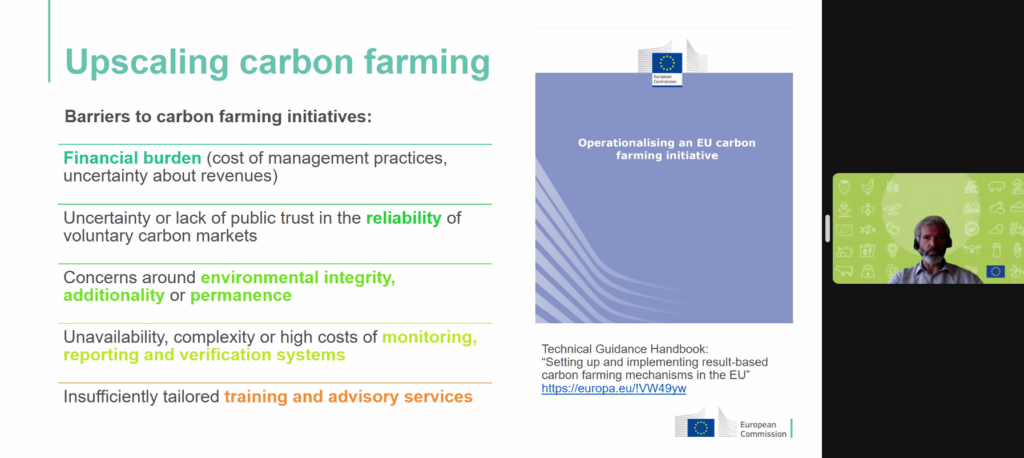Farm Europe & Pluri-Agri have organized an online event on “Carbon & Agriculture: certifying sequestration and GHG reduction” on the 29th of June under the patronage of MEP Martin Hlaváček with MEP Anne Sander.
The event presented an opportunity for a fruitful exchange on the upcoming carbon farming initiative between the participants of the webinar with the members of the European Parliament, the European Commission (DG CLIMA & DG AGRI), and researchers (Arvalis & Wageningen University), and the farming community.
The Commission’s new initiative (Certification of carbon removals) is proposing EU rules on certifying carbon removals, meaning that it will develop the necessary rules to monitor, report, and verify the authenticity of these removals. At the same time, time is ticking, as the Commission has set the objective to reach climate neutrality by 2035 in the combined land use, forestry, and agriculture sector at the EU level. These developments represent a major impact on the way farmers operate across Europe, and an opportunity to define a common EU standard for the transparent identification of activities that remove carbon from the atmosphere in a sustainable way.
In his opening, MEP Martin Hlaváček has outlined that the system needs to be fair, where farmers would be benefitting from what they are contributing to society. In return, this could turn the CAP into a tool fully appreciated by all for its role in coping with our future challenges. But additional financial support beyond CAP budget will be needed.
Up next, the European Commission has outlined the upcoming steps for the regulatory framework for the certification of carbon removals, highlighting that the Commission is going to table a proposal by the end of this year, and set up an expert group to assist the Commission in developing the framework. In addition, the discussion touched upon the role the CAP might play to put in place enabling conditions for carbon removing certifications.
On the question of whether the Commission intends to ‘fill two needs with one deed’ – meaning that it aims to tackle both carbon sequestration and reducing GHG emissions at the same time with its proposal – DG CLIMA has reaffirmed that the initiative will focus specifically on carbon removals, and won’t certify emission reductions. A discussion is still on going on this specific issue within the European Commission.
Furthermore, the researchers from Arvalis & the Wageningen University have presented their already developed models, such as the French Low Carbon Label or the Soil Carbon Tool, to feed into the upcoming initiative. Jan Peter Lesschen from the Wageningen University defined the steps for the successful uptake of carbon farming, while Laure Nietschelm from Arvalis has reaffirmed that it is crucial to take into account a complete coverage of emission reductions, meaning both pillars of carbon sequestration and GHG reduction. After designing a method to calculate emissions reduction, the Label built a robust rewarding scheme based on operative, mature and easy to use scientific approaches.
French farmer Benjamin Lammert has shared some of his own experiences from his farm, showing, based on more than 20 years of data collection and samples, that improved yields and increased and enhanced productivity can lead to more carbon in soils. Farmers are climate sentinels, they experiment the effect of climate change on the ground in their daily practices.
In her closing statement, MEP Anne Sander has reiterated the need for a solid scientific basis and financial tools to accompany the farmers in being able to move forward with the initiative, underlining that the environmental transition must be done with the farmers on board, not without. We need a simple, transparent and truly European framework, combining carbon sequestration and GHG emissions reductions, evidence and data-based systems, accompanied by incentives and funding to boost investment.
Enter the passcode to watch “Carbon & Agriculture : certifying sequestration and GHG reduction”
Passcode: 8v01MsH?

O artigo foi publicado originalmente em Farm Europe.
